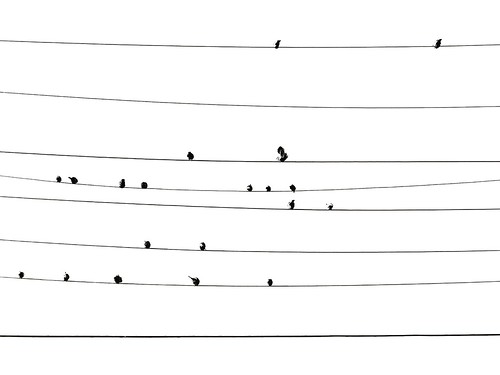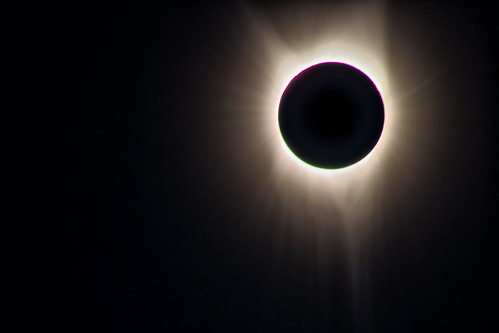Measured using UV spectrophotometry at 260 nm, purity was determined by the 260 nm/280 nm absorbance ratio, and quality was confirmed using agarose gel electrophoresis. Total RNA (1 mg) was reverse transcribed using oligo dT primers and Reverse Transcription System (Promega; Madison, WI, USA) according to the manufacturer’s instructions. Transcript expression was analyzed using qPCR with a 7500 RealTime PCR System (Applied Biosystems; Carlsbad, CA, USA) and GoTaq qPCR Master Mix (Promega) as the fluorophore. PCR was performed in triplicate for 40 cycles comprising an initial denaturation stage of 95uC for 2 min, followed by 95uC for 15 s and finally 60uC for 1 12926553 min. Primers were designed using Primer Express 2.0 (Applied Biosystems) as follows: glyceraldehyde-3phosphate dehydrogenase (GAPDH)?F59-TGTCGTGGAGTCTACTGGCGTCTT-39, R59-GAGGGAGTTGTCATATTTCTCGTGGT-39; VEGF?F59-CGAGACGCAGCGACAAGGCA-39, R59-ACCTCTCCAAACCGTTGGCACG-39; SDF-1?F59-GAGCCATGTCGCCAGAGCCAAC-39, R59-CACACCTCTCACATCTTGAGCCTCT-39; IGF-1?F59TTACTTCAACAAGCCCACAGG-39, R59-TACATCTCCAGCCTCCTCAGA-39. A standard curve was constructed in each of the experimental repetitions by serial dilution of cDNA (1 to 1:10000). PCR specificity was examined by dissociation curve analyses. To determine the relative concentration of the products,Immunofluorescence StainingTo observe the number of EPCs residing in the kidney, double immunofluorescence staining was performed. Nobiletin site Briefly, deparaffinized tissue sections were blocked with 4 goat serum to decrease nonspecific staining and then incubated with 1:100 rabbit antiCD34 antibody (ABbiotec) and 1:100 mouse anti-Flk antibody (Santa Cruz Biotechnology) at 4uC overnight. Primary antibodyIschemic Preconditioning and RenoprotectionFigure 3. Double immunofluorescence staining to show the presence of EPCs in the ischemic kidney at 12 h after reperfusion. Cellular co-expression of CD34 (red) and flk (green) in kidney medulla indicating the presence of EPCs. In Sham tissues (A ), there was no or only slight expression of EPCs. PN (D ) caused 23727046 higher fluorescence intensity of EPCs in renal medulla. IPC (G ) caused significant increases in the intensity of fluorescence of EPCs. [Magnification: 6200 (A ), 6400 (J, K)]. doi:10.1371/journal.pone.0055389.gwe used the comparative CT (22DDCT) method, according to the instructions supplied by Applied Biosystems.Statistical Hypericin AnalysesAll data  are expressed as mean 6 SEM. The means of the different groups were compared using one-way analysis of variance (ANOVA). The level of significance for all comparisons was set at P,0.05 or 0.01.Western Blotting AnalysesTotal proteins were extracted from kidney tissues with a protein extraction kit (KeyGEN Biotechnology; Nanjing, China). SDSPAGE and immunoblotting were performed according to the manufacturer’s instructions (Bio-Rad; Hercules, CA, US). Briefly, polyvinylidene fluoride membranes (Millipore; Billerica, MA, USA) were blocked with 5 skim milk in Tris-buffered saline (pH 7.5)-Tween 20 for 2 h at room temperature after protein transfer from 12 SDS-PAGE gels (50 mg/lane), and the membranes were subsequently incubated overnight at 4uC with either rabbit polyclonal anti-VEGF antibody (1:1000; Santa Cruz Biotechnology), rabbit polyclonal anti-b-actin antibody (1:2000; BOIS; Beijing, China), rabbit polyclonal anti-SDF antibody (1:1000; Santa Cruz Biotechnology), or rabbit polyclonal antiIGF-1 antibody (1:1000; Abcam; Cambridge, MA, USA). The following day, membranes were exten.Measured using UV spectrophotometry at 260 nm, purity was determined by the 260 nm/280 nm absorbance ratio, and quality was confirmed using agarose gel electrophoresis. Total RNA (1 mg) was reverse transcribed using oligo dT primers and Reverse Transcription System (Promega; Madison, WI, USA) according to the manufacturer’s instructions. Transcript expression was analyzed using qPCR with a 7500 RealTime PCR System (Applied Biosystems; Carlsbad, CA, USA) and GoTaq qPCR
are expressed as mean 6 SEM. The means of the different groups were compared using one-way analysis of variance (ANOVA). The level of significance for all comparisons was set at P,0.05 or 0.01.Western Blotting AnalysesTotal proteins were extracted from kidney tissues with a protein extraction kit (KeyGEN Biotechnology; Nanjing, China). SDSPAGE and immunoblotting were performed according to the manufacturer’s instructions (Bio-Rad; Hercules, CA, US). Briefly, polyvinylidene fluoride membranes (Millipore; Billerica, MA, USA) were blocked with 5 skim milk in Tris-buffered saline (pH 7.5)-Tween 20 for 2 h at room temperature after protein transfer from 12 SDS-PAGE gels (50 mg/lane), and the membranes were subsequently incubated overnight at 4uC with either rabbit polyclonal anti-VEGF antibody (1:1000; Santa Cruz Biotechnology), rabbit polyclonal anti-b-actin antibody (1:2000; BOIS; Beijing, China), rabbit polyclonal anti-SDF antibody (1:1000; Santa Cruz Biotechnology), or rabbit polyclonal antiIGF-1 antibody (1:1000; Abcam; Cambridge, MA, USA). The following day, membranes were exten.Measured using UV spectrophotometry at 260 nm, purity was determined by the 260 nm/280 nm absorbance ratio, and quality was confirmed using agarose gel electrophoresis. Total RNA (1 mg) was reverse transcribed using oligo dT primers and Reverse Transcription System (Promega; Madison, WI, USA) according to the manufacturer’s instructions. Transcript expression was analyzed using qPCR with a 7500 RealTime PCR System (Applied Biosystems; Carlsbad, CA, USA) and GoTaq qPCR  Master Mix (Promega) as the fluorophore. PCR was performed in triplicate for 40 cycles comprising an initial denaturation stage of 95uC for 2 min, followed by 95uC for 15 s and finally 60uC for 1 12926553 min. Primers were designed using Primer Express 2.0 (Applied Biosystems) as follows: glyceraldehyde-3phosphate dehydrogenase (GAPDH)?F59-TGTCGTGGAGTCTACTGGCGTCTT-39, R59-GAGGGAGTTGTCATATTTCTCGTGGT-39; VEGF?F59-CGAGACGCAGCGACAAGGCA-39, R59-ACCTCTCCAAACCGTTGGCACG-39; SDF-1?F59-GAGCCATGTCGCCAGAGCCAAC-39, R59-CACACCTCTCACATCTTGAGCCTCT-39; IGF-1?F59TTACTTCAACAAGCCCACAGG-39, R59-TACATCTCCAGCCTCCTCAGA-39. A standard curve was constructed in each of the experimental repetitions by serial dilution of cDNA (1 to 1:10000). PCR specificity was examined by dissociation curve analyses. To determine the relative concentration of the products,Immunofluorescence StainingTo observe the number of EPCs residing in the kidney, double immunofluorescence staining was performed. Briefly, deparaffinized tissue sections were blocked with 4 goat serum to decrease nonspecific staining and then incubated with 1:100 rabbit antiCD34 antibody (ABbiotec) and 1:100 mouse anti-Flk antibody (Santa Cruz Biotechnology) at 4uC overnight. Primary antibodyIschemic Preconditioning and RenoprotectionFigure 3. Double immunofluorescence staining to show the presence of EPCs in the ischemic kidney at 12 h after reperfusion. Cellular co-expression of CD34 (red) and flk (green) in kidney medulla indicating the presence of EPCs. In Sham tissues (A ), there was no or only slight expression of EPCs. PN (D ) caused 23727046 higher fluorescence intensity of EPCs in renal medulla. IPC (G ) caused significant increases in the intensity of fluorescence of EPCs. [Magnification: 6200 (A ), 6400 (J, K)]. doi:10.1371/journal.pone.0055389.gwe used the comparative CT (22DDCT) method, according to the instructions supplied by Applied Biosystems.Statistical AnalysesAll data are expressed as mean 6 SEM. The means of the different groups were compared using one-way analysis of variance (ANOVA). The level of significance for all comparisons was set at P,0.05 or 0.01.Western Blotting AnalysesTotal proteins were extracted from kidney tissues with a protein extraction kit (KeyGEN Biotechnology; Nanjing, China). SDSPAGE and immunoblotting were performed according to the manufacturer’s instructions (Bio-Rad; Hercules, CA, US). Briefly, polyvinylidene fluoride membranes (Millipore; Billerica, MA, USA) were blocked with 5 skim milk in Tris-buffered saline (pH 7.5)-Tween 20 for 2 h at room temperature after protein transfer from 12 SDS-PAGE gels (50 mg/lane), and the membranes were subsequently incubated overnight at 4uC with either rabbit polyclonal anti-VEGF antibody (1:1000; Santa Cruz Biotechnology), rabbit polyclonal anti-b-actin antibody (1:2000; BOIS; Beijing, China), rabbit polyclonal anti-SDF antibody (1:1000; Santa Cruz Biotechnology), or rabbit polyclonal antiIGF-1 antibody (1:1000; Abcam; Cambridge, MA, USA). The following day, membranes were exten.
Master Mix (Promega) as the fluorophore. PCR was performed in triplicate for 40 cycles comprising an initial denaturation stage of 95uC for 2 min, followed by 95uC for 15 s and finally 60uC for 1 12926553 min. Primers were designed using Primer Express 2.0 (Applied Biosystems) as follows: glyceraldehyde-3phosphate dehydrogenase (GAPDH)?F59-TGTCGTGGAGTCTACTGGCGTCTT-39, R59-GAGGGAGTTGTCATATTTCTCGTGGT-39; VEGF?F59-CGAGACGCAGCGACAAGGCA-39, R59-ACCTCTCCAAACCGTTGGCACG-39; SDF-1?F59-GAGCCATGTCGCCAGAGCCAAC-39, R59-CACACCTCTCACATCTTGAGCCTCT-39; IGF-1?F59TTACTTCAACAAGCCCACAGG-39, R59-TACATCTCCAGCCTCCTCAGA-39. A standard curve was constructed in each of the experimental repetitions by serial dilution of cDNA (1 to 1:10000). PCR specificity was examined by dissociation curve analyses. To determine the relative concentration of the products,Immunofluorescence StainingTo observe the number of EPCs residing in the kidney, double immunofluorescence staining was performed. Briefly, deparaffinized tissue sections were blocked with 4 goat serum to decrease nonspecific staining and then incubated with 1:100 rabbit antiCD34 antibody (ABbiotec) and 1:100 mouse anti-Flk antibody (Santa Cruz Biotechnology) at 4uC overnight. Primary antibodyIschemic Preconditioning and RenoprotectionFigure 3. Double immunofluorescence staining to show the presence of EPCs in the ischemic kidney at 12 h after reperfusion. Cellular co-expression of CD34 (red) and flk (green) in kidney medulla indicating the presence of EPCs. In Sham tissues (A ), there was no or only slight expression of EPCs. PN (D ) caused 23727046 higher fluorescence intensity of EPCs in renal medulla. IPC (G ) caused significant increases in the intensity of fluorescence of EPCs. [Magnification: 6200 (A ), 6400 (J, K)]. doi:10.1371/journal.pone.0055389.gwe used the comparative CT (22DDCT) method, according to the instructions supplied by Applied Biosystems.Statistical AnalysesAll data are expressed as mean 6 SEM. The means of the different groups were compared using one-way analysis of variance (ANOVA). The level of significance for all comparisons was set at P,0.05 or 0.01.Western Blotting AnalysesTotal proteins were extracted from kidney tissues with a protein extraction kit (KeyGEN Biotechnology; Nanjing, China). SDSPAGE and immunoblotting were performed according to the manufacturer’s instructions (Bio-Rad; Hercules, CA, US). Briefly, polyvinylidene fluoride membranes (Millipore; Billerica, MA, USA) were blocked with 5 skim milk in Tris-buffered saline (pH 7.5)-Tween 20 for 2 h at room temperature after protein transfer from 12 SDS-PAGE gels (50 mg/lane), and the membranes were subsequently incubated overnight at 4uC with either rabbit polyclonal anti-VEGF antibody (1:1000; Santa Cruz Biotechnology), rabbit polyclonal anti-b-actin antibody (1:2000; BOIS; Beijing, China), rabbit polyclonal anti-SDF antibody (1:1000; Santa Cruz Biotechnology), or rabbit polyclonal antiIGF-1 antibody (1:1000; Abcam; Cambridge, MA, USA). The following day, membranes were exten.
